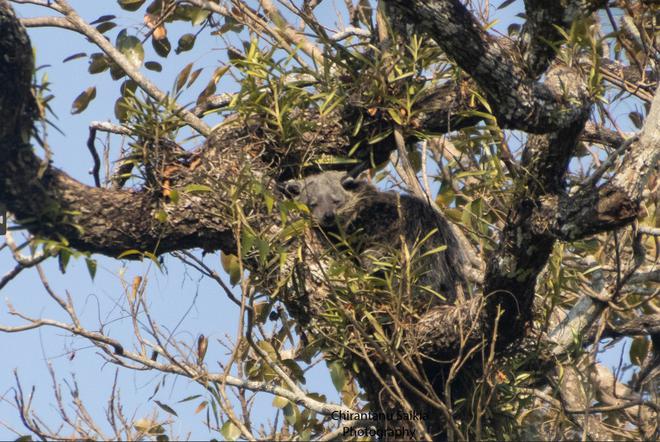GUWAHATI:
Two new mammalian species have been added to the list of fauna in Assam’s Kaziranga National Park and Tiger Reserve, the primary address of the one-horned rhinoceros on earth.
The two mammals are the elusive binturong (Arctictis binturong), the largest civet in India also known as the bearcat, and the small-clawed otter (Aonyx cinereus). Both are listed under Schedule I of the Wildlife Protection Act of 1972.
Officials of the rhino habitat said the two species were recorded during a recent enumeration, taking the mammalian count in the 1,302 sq. km tiger reserve to 37.
The list of mammals in Kaziranga, designated a UNESCO World Heritage Site in 1985, is topped by the Big Five — the great Indian one-horned rhinoceros (Rhinoceros unicornis), Indian elephant (Elephas maximus), Bengal tiger (Panthera tigris), wild water buffalo (Bubalus bubalis), and the eastern swamp deer (Cervus duvauceli).
An arboreal mammal native to South and Southeast Asia, the binturong is not easily found due to its nocturnal and arboreal habits. It is also uncommon in much of its range and is known to have a distribution exclusive to the northeast in India,” Kaziranga’s director Sonali Ghosh said.

The binturong was photographed on January 10 during the fifth migratory bird count in the tiger reserve.
The small-clawed otter was spotted after a short training programme for the officers and frontline staff conducted by the Wildlife Institute of India in collaboration with the Assam Forest Department.
While Chirantanu Saikia, a tour guide, clicked the binturong, the park’s divisional forest officer Arun Vignesh photographed the small-clawed otter, the world’s smallest otter species.
Also known as the Asian small-clawed otter, the mammal has a wide distribution range extending through India eastwards to Southeast Asia and southern China. In India, it is found mostly in the protected areas of West Bengal, Assam, Arunachal Pradesh, Karnataka, Tamil Nadu, and some parts of Kerala in the Western Ghats region.
Small-clawed otters have partially webbed feet with short claws, which make them skilled hunters in aquatic environments. They are primarily found in freshwater habitats where they feed on a diet of fish, crustaceans, and mollusks.
The small-clawed otter was previously reported from the western Himalayas and parts of Odisha. There are no recent records of its presence in these two regions.
The other mammals found in Kaziranga National Park and Tiger Reserve include the Indian wild boar (Sus scrofa), Indian gaur (Bos gaurus), sambar (Cervus unicolor), hoolock or white-browed gibbon (Hylobates hoolock), Gangetic dolphin (Platanista gangetica), capped langur or leaf monkey (Presbytis pileatus), sloth bear (Melursus ursinus), leopard (Panthera pardus), and the jackal (Canis aureus).







